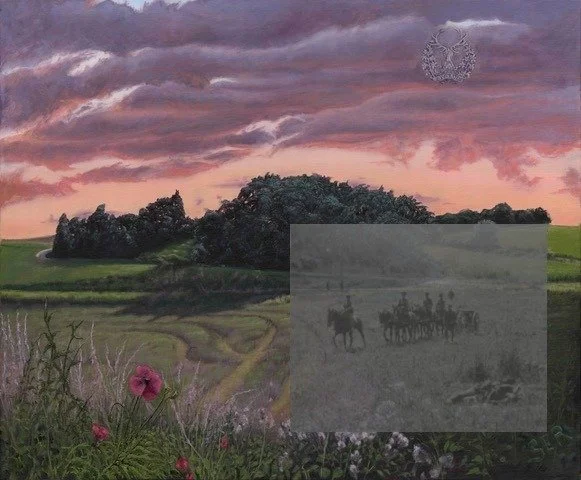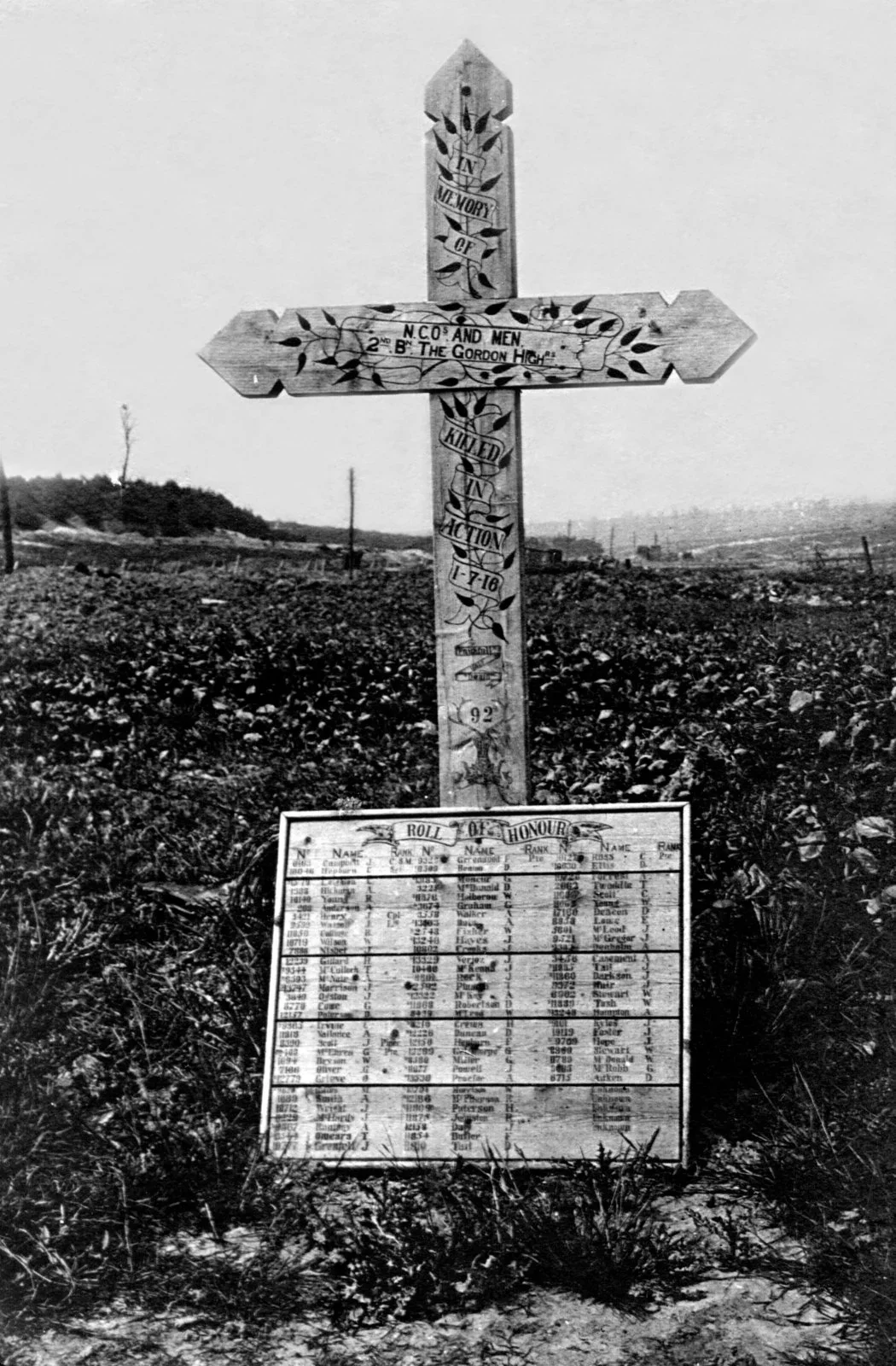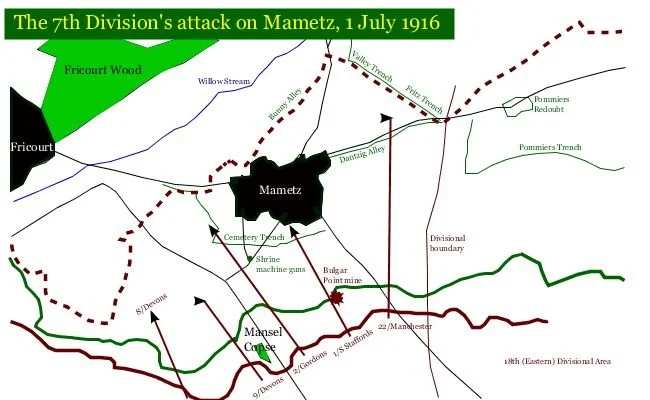Painting of Mansel Copse overlaid with a Gordon Highlander K.I.A. from Malins’ film (Image IWM)
Malins filmed the artillery moving up and dead Gordon Highlanders in the field (Image IWM)
On July the 1st 1916, The Gordon Highlanders advanced from their trenches just west of Mansel Copse. Many were cut down by a German machine gun post (called The Shrine) just outside the village of Mametz. Despite heavy losses the Gordon Highlanders achieved their objective of reaching the village
Malins’ footage filmed in the days following the battle, shows the field in front of Mansel Copse where a number of Highlanders lay K.I.A. It is believed that this was the first time British soldiers had been filmed dead on the battlefield.
The painting (oil on canvas-panel) shows Mansel Copse as it looked in the summer of 2024.
“In view of the subject of this painting (oil on canvas board) I decided to paint it at sunset. It’s a quite place. It was windless, the air felt heavy”
Simon Reeves
Photo of the wooden Memorial cross erected shortly after the battle. It lists the 2nd Gordons who died on July 1 1916.
This is the view of Mansel Copse from the site of the German machine gun post called ‘The Shrine’. This machine-gun caused heavy losses on the Gordons.
Photo of Gordon Highlanders attacking Mametz. Taken near Mansel Copse looking towards ‘The Shrine’ machine gun post (Image IWM)
The battalion went into action with 24 officers and 783 other ranks, and sustained 119 killed, 287 wounded, and 39 missing.
Map showing the direction of the Gordon Highlanders advance during the attack near Mametz
About Malins
Geoffrey Malins was commissioned to capture film and photographs of the war. In 1916 he was attached to the British Army on the first day of the battle of the Somme. He gathered many hours of footage which was edited into a 77 minute documentary shown in cinemas back home.
The film was controversial in that it showed images of dead soldiers and Malins was unsure how the public would react. He decided to keep the images in as ‘it is only a very mild touch of what is happening day after day, week after week, on the bloody plains of France and Belgium…’. The public evidently saw it as their duty to view the film, with over 20 million viewings in the following months.
The work was dangerous and Malins was eventually invalided away from battle, having been wounded twice, deafened and gassed. He was awarded an OBE in June 1918 in recognition of his work as official photographer ‘in circumstances of great difficulty and danger’.





